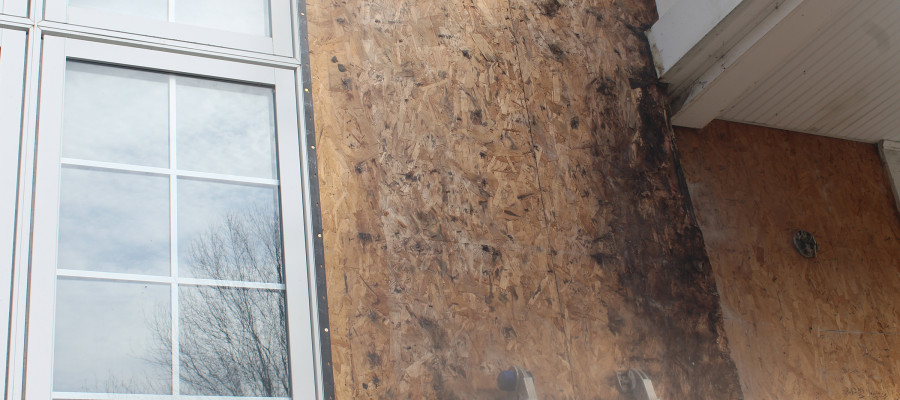
Stucco is a beautiful and popular siding option. Many homeowners love the simple yet elevated way it makes a home look. And while it shares its own set of benefits, it can have a major downfall in the form of moisture damage, especially for homeowners who live in the Chester County region. But the good news is, you can catch the problem and remediate it.
Pennsylvania homes all share a common trait—they all face a good deal of moisture. Your siding’s primary function is to keep that moisture outside of your home’s walls. Homes with stucco siding can especially see extensive moisture problems.
If you have a stucco-clad home, how can you tell if it has water damage, and what should you do if you discover moisture problems?
Signs of Stucco Moisture Damage
You can start the investigation with a visual assessment.
Siding inspections are important because they can help you catch issues in your siding before even greater damage can occur. Stucco failure tends to occur from improper installation or lack of upkeep, such as sealing around windows and doors properly.
Don’t be fooled by the age of your home either. A large percentage of homes built after 1980 containing stucco siding have revealed significant moisture problems. When inspecting your stucco, no matter the age, watch for:
- Cracking
- Broken caulking
- Discoloration on your siding or on the interior walls of your home
- Mildew smell
- Flaking
Even if you don’t see obvious signs of stucco damage, moisture may still be a problem. Moisture damage can easily go unnoticed until a significant amount of damage has occurred. If you’re at all worried or just want to have the peace of mind that your siding hasn’t been exposed to moisture issues, then testing for moisture is a great idea.
See the ways hidden stucco damage could put your home at risk.
Testing for Exterior Moisture
If you suspect water intrusion at all or simply want to be safe, you should have your stucco siding inspected by a professional. They may utilize a variety of methods to determine if and how much water damage is present.
Exterior Probe Testing
An exterior probe test is perhaps the most accurate determinant for the level of moisture damage in your stucco. A contractor will drill a set of 3/16-inch holes at each testing site, then insert a moisture meter to determine the level of moisture found behind your siding.
Don’t fret over this process. A skilled contractor will seamlessly patch the holes to match your current siding but to also ensure no water can penetrate after the inspection.
Infrared Cameras
Sometimes, contractors will use thermal imaging to sense where your stucco is warmer and cooler to determine moisture damage. However, this is a far less accurate test and should be used more as a preliminary determinant than an accurate assessment.
Video Scope
A contractor may also use a camera to search the wall cavities for signs of damage. Video can be an accurate determinant if the wall cavity is completely clear and accessible. However, many homes are filled with insulation, electrical, and plumbing (as they should be), making this a less accurate test.
Invasive Measures
Sometimes when a test detects moisture or when damage is highly suspected, a contractor may need to pull back or cut out sections of the siding to get a more accurate assessment of the damage present.
We know that some of the more invasive options may sound scary, but the reality is that water damage is a far scarier reality. A skilled contractor can patch intrusions in your stucco if water damage is not present, but if it is, that same contractor can also save your home from greater problems arising due to lack of action.
Why Immediate Remediation Is Essential
Once you’ve discovered moisture damage in your stucco, the best thing to do is contact a skilled contractor for a full remediation. Moisture that builds up in and behind stucco does not easily dry out. It leads to water damage and even dry rot.
Many homes with stucco failure are already suffering from rot in the framing, insulation, siding, and even drywall of their homes.
Without immediately taking care of the problem, further and more costly damage can occur. Once dry rot has set in, it spreads, leaving your home in jeopardy of a serious structural problem.
A stucco remediation project doesn’t simply remove damaged stucco and replace it with new siding. It also diagnoses the problem and root cause for the failure to remediate the problem. It works from the inside out to repair damaged framing and other siding structures, and is completed with the installation of a siding that will protect your home for years.
While the entire remediation process takes a significant investment of time and money, it is worth it. Don’t let further damage overtake your home. Our team can work with you to finance the full stucco remediation so you can eradicate the problem as soon as you discover it.
Find out more about how to solve your home’s stucco problems with our “Stucco Remediation Guide.”
Don’t Let Moisture Damage Get the Better of Your Home
Don’t panic if you see moisture damage on your home’s stucco. Remediating stucco damage is our specialty. At Distinctive Homes we want to leave your home better off than we found it by not only replacing damaged framing and siding but by properly installing a high-end siding that will protect your home for years.
We want to help you understand your home and provide real solutions for structural soundness. If your home needs care from the inside today out, get our stucco remediation today.
